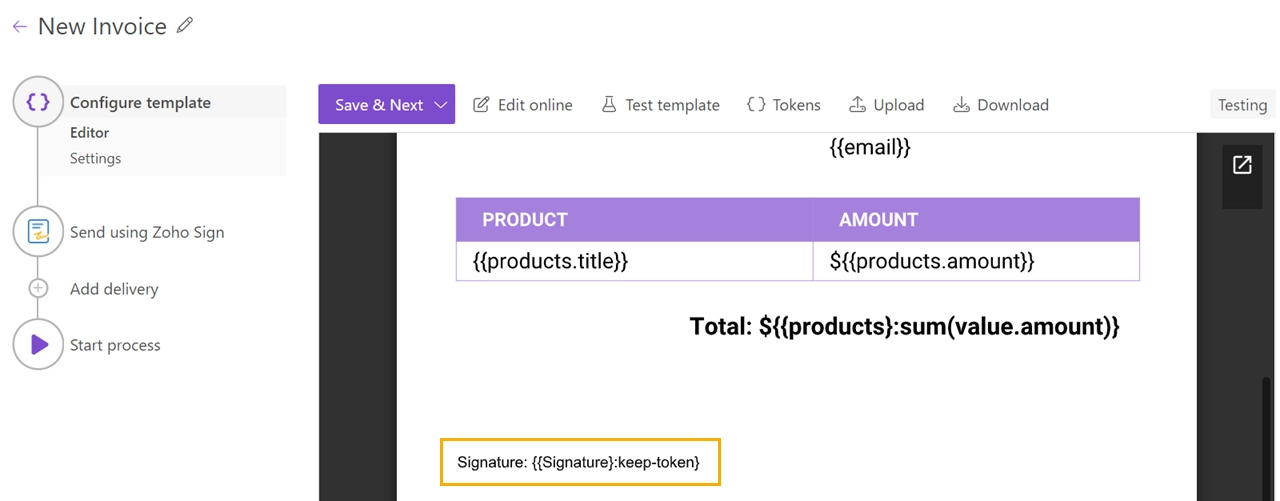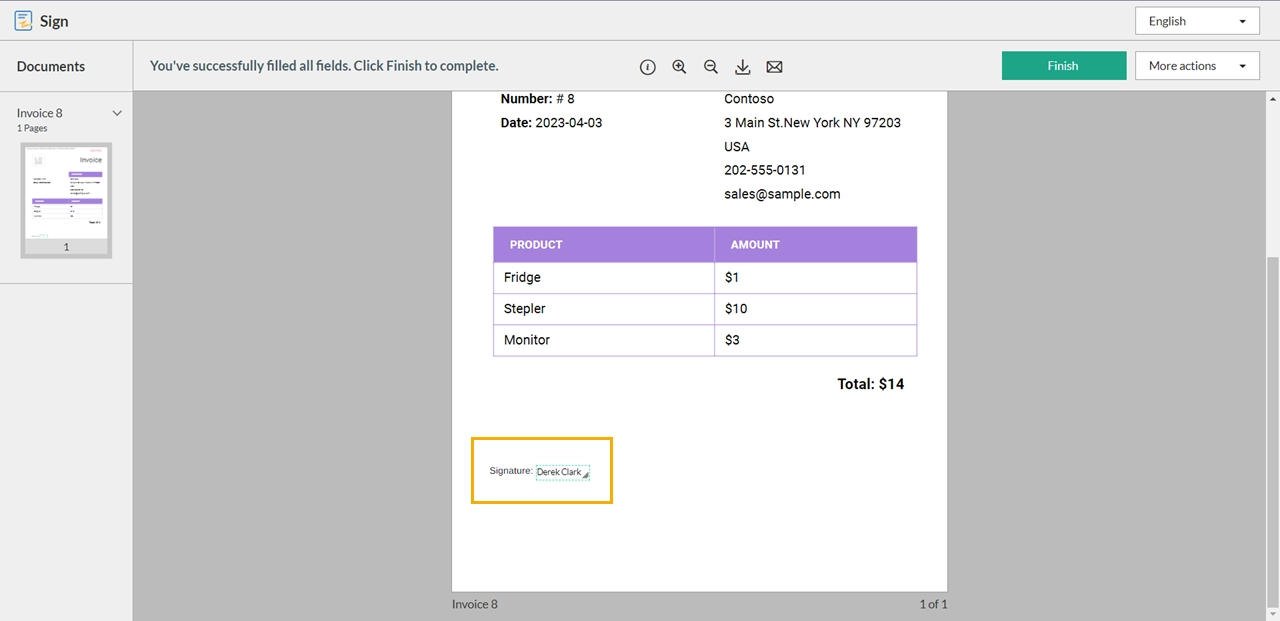Zoho Sign delivery
The Zoho Sign delivery sends a resulting document to Zoho Sign for signing.
Note
You need to have Zoho Sign credits available in your Zoho Sign account for this delivery to work. This is also a requirement for this delivery’s Test mode.
On the first step, connect to your Zoho Sign account from the Plumsail account.
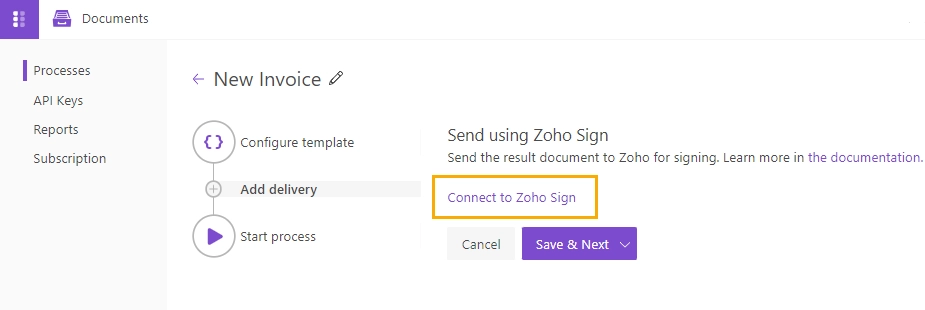
Then you’ll see the Zoho Sign delivery settings.
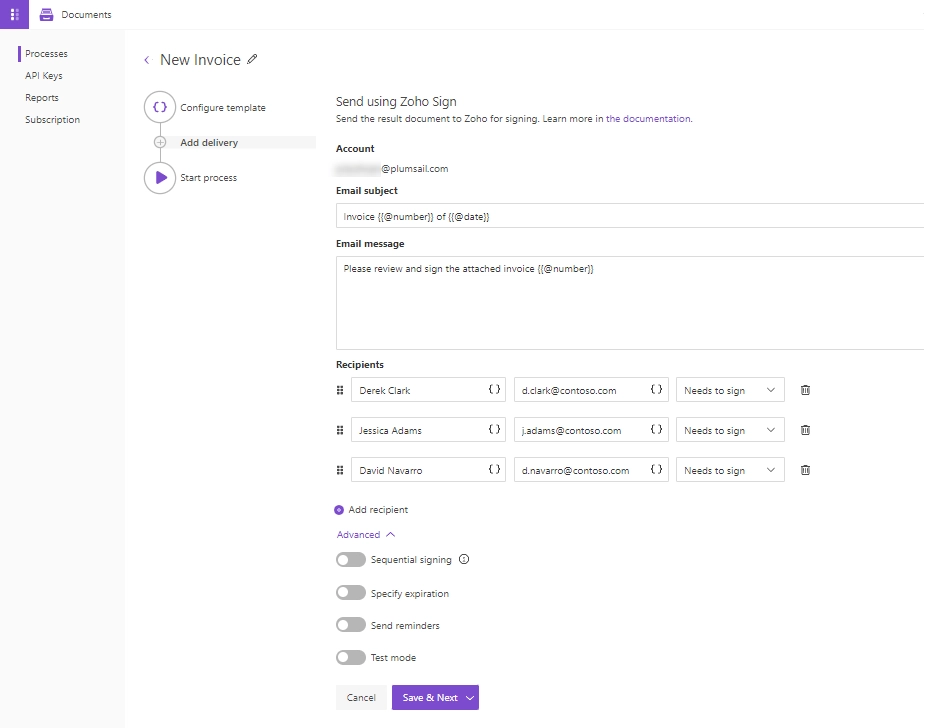
Let’s check these settings in detail.
Main settings
Fill in email subject and body. You can use tokens from the document template in these fields to personalize them.
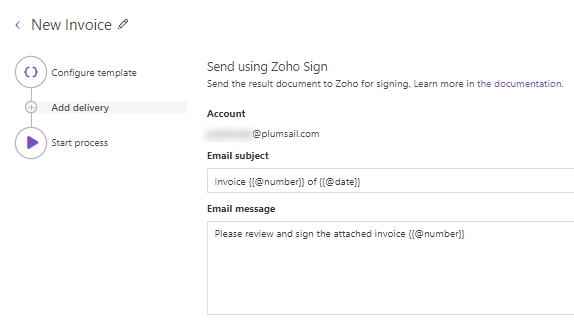
Add recipients and assign roles to them:

Let’s review the advanced settings now.
Sequential signing, test mode, and more
Expand Advanced to customize more settings:
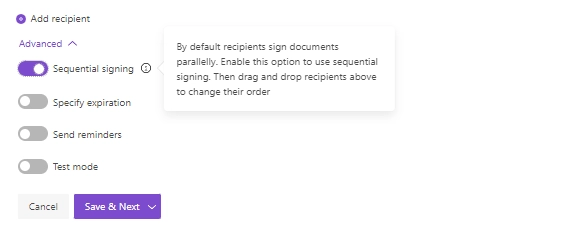
Here you can switch on Sequential signing, then just drag and drop recipients to define an order in which they should sign the document.

Also, you can set the expiration period, whether to send reminders, and activate Test mode.
When you activate Test mode, you don’t spend Zoho Sign credits. However, you need to have Zoho Sign credits available in your account. Otherwise, Test mode will not work.
Note
You’ll need to purchase one of the Zoho Sign API plans to be able to use all available features of the delivery.
Specify recipients dynamically based on your data
You may want to set recipients dynamically for each document. In this case, you can use tokens in the Email field. Data passed to the process will define who will receive the document.

The field can contain more than one email address. Separate those email addresses with commas or semicolons:
{
"email": "Derek Clark <d.clark@contoso.com>; Jessica Adams <j.adams@contoso.com>"
}
Mind that if you put the list of recipients into a single field, the information you typed in the Name field will be skipped.
You can specify recipient names in the list by placing names before the email address.

Or you can omit that, and the email address will be displayed as the recipient name.
In case Sequential signing is enabled, the order in which recipients receive the document will be the same as in the list.
Use tokens inside email subject and body
You can insert values from your data using tokens.
Their list is available by clicking { }.
Let us assume your data has property address.
In this case, you can include it using token {{address}}.
The tokens work in the same way as in document templates including value functions.
Additionally, you can use predefined tokens:
{{@date}}- full current date with time,{{@number}}- the current document number.
Note
